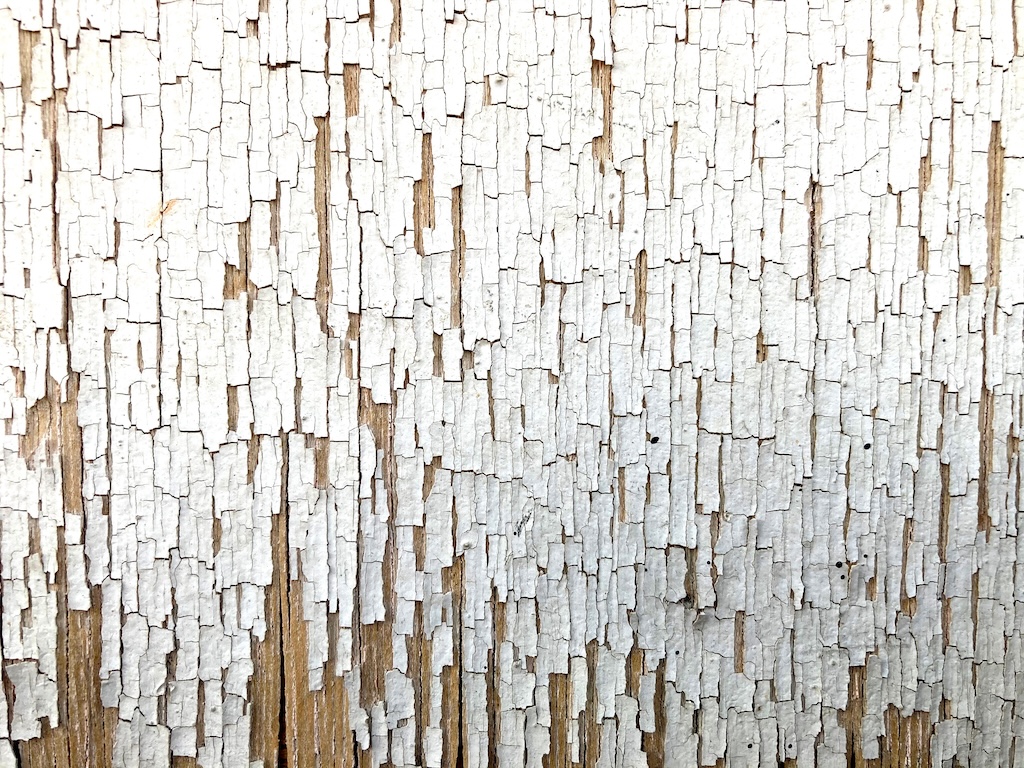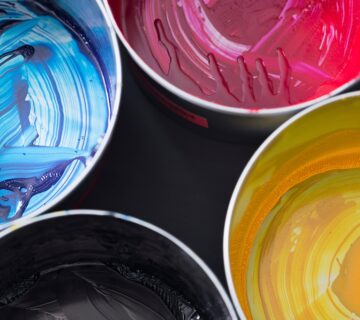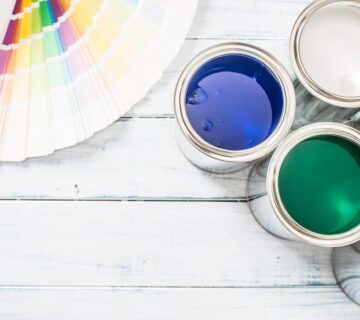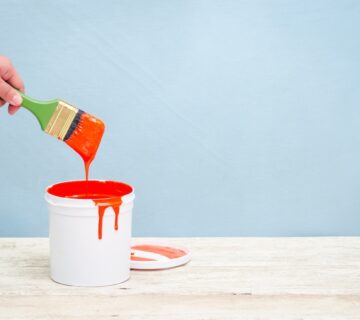A home’s exterior paint is not just about aesthetics; it’s also a critical line of defense against weather-related damage. From the scorching sun to relentless rain, various weather elements can wreak havoc on your paint job over time. Therefore, protecting your paint from these elements is an essential part of maintaining the appearance and integrity of your home. This blog will provide insights into how you can protect your home’s paint job from the ravages of weather.
Understanding the Impact of Weather
Sun and UV Rays
Prolonged exposure to sunlight and ultraviolet (UV) rays can cause paint to fade, blister, or peel. Darker colors absorb more UV light and are particularly susceptible to fading. This absorption accelerates the degradation process, leading to more pronounced and quicker deterioration of the paint’s appearance and protective qualities.
Moisture and Rain
Moisture from rain, snow, or high humidity can penetrate paint, leading to issues like peeling, mold, and mildew growth. In colder climates, the freeze-thaw cycle can also cause paint to crack and chip. This cycle exacerbates the damage as water absorbed by the paint expands upon freezing, further compromising the paint’s integrity and adherence to the surface.
Wind and Debris
Strong winds can carry debris that can scratch and damage the paint surface. Additionally, wind-driven rain intensifies the impact of moisture on your home’s exterior. This combination of mechanical and moisture-related stress can significantly accelerate the wear and degradation of exterior paint, leading to more frequent maintenance and repainting needs. Therefore, it’s essential to take proactive measures to protect your paint job from these environmental factors.
Choosing the Right Paint
Choosing the appropriate paint type is essential for safeguarding against weather damage. High-quality, weather-resistant paints offer superior protection against the sun’s UV rays, moisture, and abrasion from wind-driven debris. These specialized paints typically contain additives that resist fading, mold, and mildew, while their improved adhesion properties help prevent peeling and cracking in extreme weather conditions. Selecting weather-resistant paints is key to ensuring long-lasting protection for your home’s exterior against environmental elements.
UV-Resistant Paint
For areas with high sun exposure, use UV-resistant paint. These paints are formulated to reflect more sunlight and resist the damaging effects of UV rays. By doing so, they significantly reduce the risk of fading, blistering, and peeling, ensuring that the painted surfaces maintain their color and integrity for longer periods.
Water-Resistant Formulations
In regions with high rainfall or humidity, opting for water-resistant paints is advisable. These formulations repel water and resist mold and mildew growth. By creating a barrier against moisture penetration, they safeguard the underlying surface from water damage, peeling, and mold and mildew growth, ensuring the longevity and durability of the paint finish in challenging environments. Therefore, choosing water-resistant paints is essential for maintaining the integrity of your home’s exterior in such climates.
Quality Matters
Investing in high-quality paint is vital for long-term durability. Higher-quality paints provide better coverage, adhesion, and resistance to weather elements. They are formulated with premium ingredients that ensure a longer-lasting finish, minimizing the need for frequent touch-ups or repaints. This investment not only enhances the aesthetic appeal of your property but also provides a more cost-effective solution over time by reducing maintenance and repainting costs.
Proper Application Techniques
The way paint is applied significantly affects its longevity and resistance to weather. Proper application techniques, including thorough surface preparation and the use of the correct primers and sealers, are essential for achieving optimal adhesion and ensuring that the paint forms a durable, protective layer against environmental factors. This careful approach to application helps prevent common issues such as cracking, peeling, and blistering, thereby extending the life of the paint job under various weather conditions.
Professional Application
Consider hiring professional painters, as they have the expertise to apply paint evenly and effectively, ensuring a more durable finish. Their experience and knowledge in handling different types of paint and surfaces allow for optimal application methods that can significantly enhance the paint’s ability to withstand weathering and wear. Additionally, professionals are adept at identifying and addressing potential issues before they become problematic, further contributing to the longevity and aesthetic quality of the paint job.
Adequate Prep Work
Proper preparation of the surface before painting is essential. This includes cleaning, repairing any damages, and applying a suitable primer. These steps ensure that the paint adheres well to the surface, providing a smooth, uniform finish that is more resistant to weathering and environmental damage. By addressing imperfections and providing a strong foundation for the paint, proper surface preparation not only prevents common issues like peeling, cracking, and blistering but also enhances the overall durability and appearance of the final paint job.
Multiple Coats
Applying multiple coats of paint can improve durability, but it’s essential to allow sufficient drying time between each coat. This ensures proper bonding to the surface and previous layers, creating a thicker, more protective barrier against environmental elements. Adequate drying time is crucial to prevent issues like bubbling, cracking, or peeling that may occur with rushed applications. By following recommended drying times, the paint job gains enhanced resilience and longevity, providing superior protection against weather and wear.
Regular Maintenance and Inspection
Consistent maintenance is crucial for extending the life of your paint job. Regular inspections and timely touch-ups address minor damage or wear, significantly prolonging the paint’s appearance and protective qualities. This proactive approach prevents minor issues from becoming major problems, ensuring vibrant and effective paint that protects surfaces from weather-related damage. Maintenance routines, including surface cleaning and repairs, are essential for maximizing the durability and longevity of your paint job. Moreover, regular upkeep preserves your home’s aesthetic appeal and structural integrity for years to come.
Routine Cleaning
Regularly clean your home’s exterior to remove dirt, dust, and mildew, preventing paint wear over time. This simple maintenance step prevents substance buildup that can degrade paint quality, leading to premature fading and peeling. By keeping the surface clean, you preserve your property’s aesthetic appeal and enhance the paint’s protective function, ensuring effective shielding from the elements. Consistent cleaning maintains the integrity of your home’s exterior, prolonging the lifespan of your paint job.
Periodic Inspections
Inspect your paint job regularly for any signs of damage, such as cracking, peeling, or fading. Early detection allows for timely touch-ups and repairs, preventing minor issues from developing into more significant problems that require extensive and costly interventions. This vigilant approach to maintenance ensures that the paint maintains its protective and aesthetic qualities, extending the life and appearance of your home’s exterior.
Caulking and Sealing
Properly caulking and sealing seams, joints, and edges is essential to prevent moisture penetration, which causes paint deterioration like peeling, blistering, and mold growth. This crucial step enhances paint job durability and home structural integrity, guarding against severe water damage. Well-sealed areas protect your home from potential water issues, preserving its appearance and value long-term. Furthermore, regular inspection and maintenance of caulking and sealing ensure continued protection against moisture intrusion.
Protective Measures
Landscaping
Maintain landscaping to prevent overhanging branches and shrubs from scratching the paint surface. This helps minimize physical damage and promotes a healthier environment for your home’s exterior by allowing surfaces to dry quickly after rain or humidity. Good air circulation reduces moisture accumulation, which consequently prevents conditions conducive to mold and mildew growth. Overall, properly managing vegetation around your home preserves the integrity and appearance of the paint, contributing to a well-maintained exterior.
Gutter Maintenance
Maintaining gutters and downspouts is essential for directing water away from your home’s exterior, minimizing the risk of water damage. This preventive measure ensures efficient drainage of rainwater and melting snow, reducing moisture penetration and paint damage. Regular gutter maintenance, such as cleaning and repairing leaks or blockages, is crucial. It prevents water from pooling around the foundation or splashing back onto walls, preserving the longevity and effectiveness of your paint job. By prioritizing gutter upkeep, homeowners can protect their exterior surfaces and extend the lifespan of their paint.
Final Thoughts
Protecting your paint job from weather damage is an ongoing process that requires the right choice of paint, proper application, regular maintenance, and proactive protective measures. By taking these steps, you can preserve the beauty and integrity of your home’s exterior against the challenges posed by the weather. For more tips on home maintenance and painting, visit our website at sisupainting.com and explore our blog at sisupainting.com/blog.





No comment